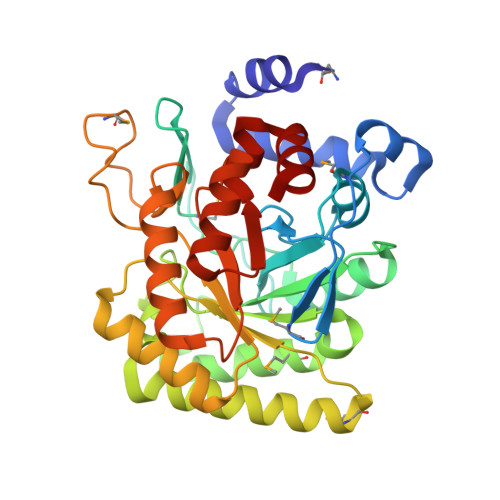E. coli Dihydroorotate Dehydrogenase Reveals Structural and Functional Distinction between different classes of dihydroorotate dehydrogenases
Norager, S., Jensen, K.F., Bjornberg, O., Larsen, S.(2002) Structure 10: 1211-1223
- PubMed: 12220493
- DOI: https://doi.org/10.1016/s0969-2126(02)00831-6
- Primary Citation of Related Structures:
1F76 - PubMed Abstract:
The flavoenzymes dihydroorotate dehydrogenases (DHODs) catalyze the fourth and only redox step in the de novo biosynthesis of UMP. Enzymes belonging to class 2, according to their amino acid sequence, are characterized by having a serine residue as the catalytic base and a longer N terminus. The structure of class 2 E. coli DHOD, determined by MAD phasing, showed that the N-terminal extension forms a separate domain. The catalytic serine residue has an environment differing from the equivalent cysteine in class 1 DHODs. Significant differences between the two classes of DHODs were identified by comparison of the E. coli DHOD with the other known DHOD structures, and differences with the class 2 human DHOD explain the variation in their inhibitors.
- Centre for Crystallographic Studies, University of Copenhagen, Universitetsparken 5, DK-2100 Copenhagen, Denmark.
Organizational Affiliation:




















